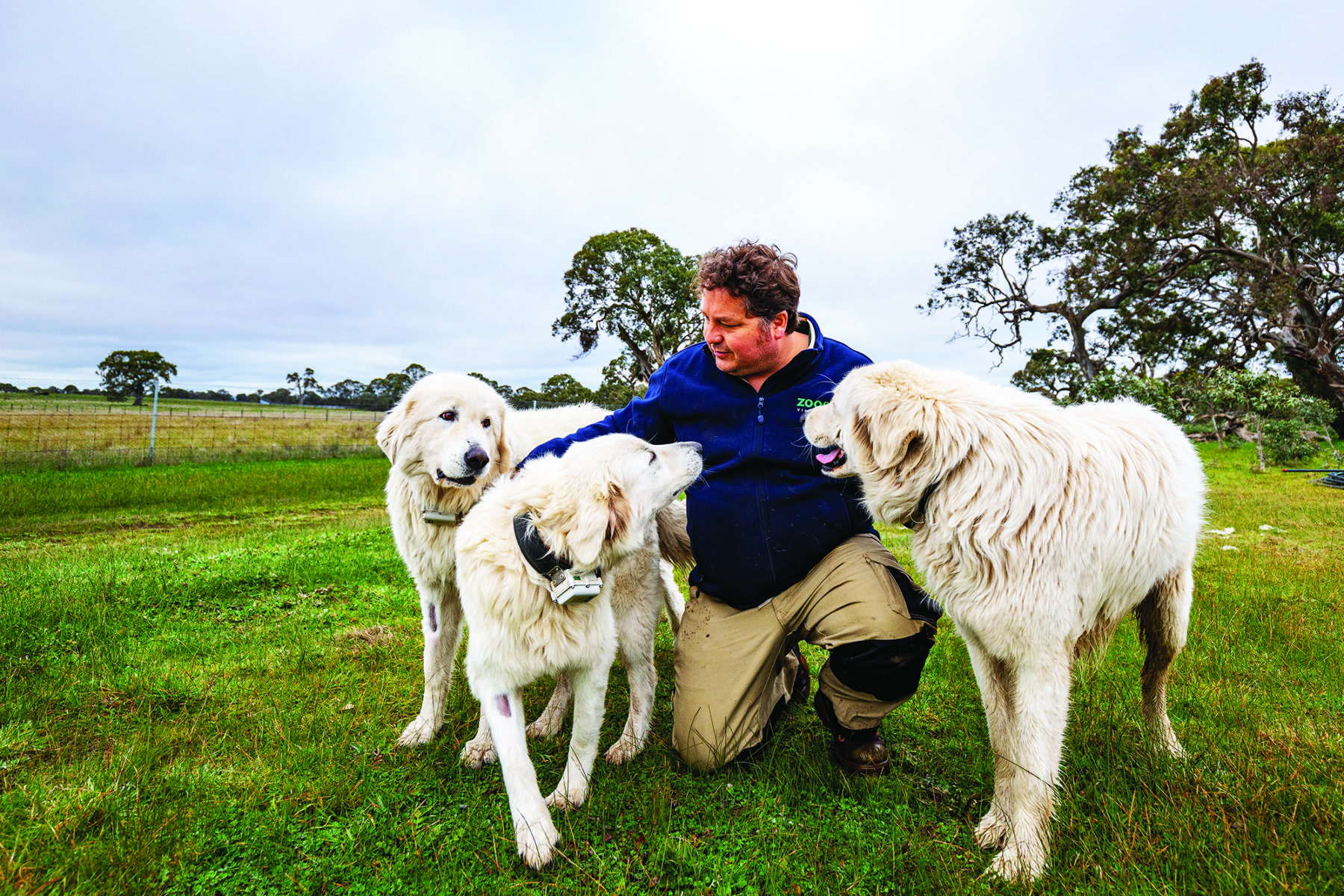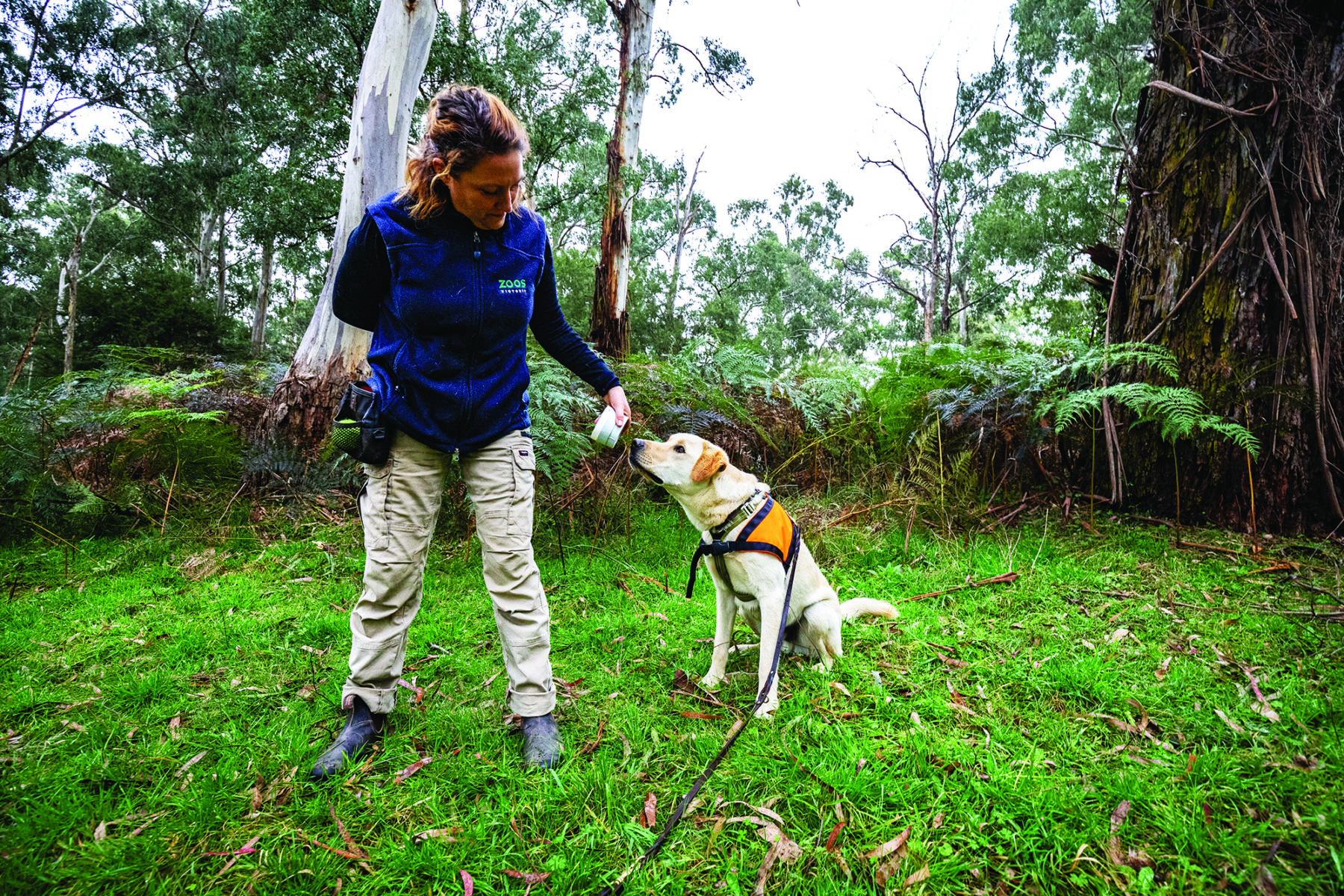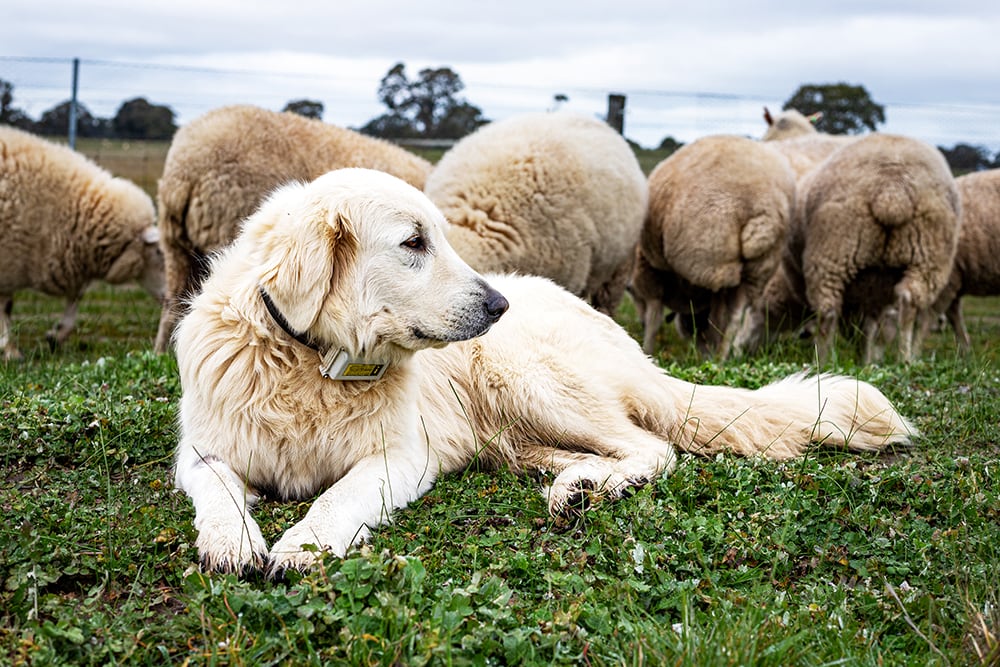IN 2004, THERE WAS no way David Williams, then an environmental science student at Deakin University, in Victoria, could have predicted the chain reaction a last-minute assignment submission would create.
A paper he’d written outlined an environmental management plan that suggested using trained Maremma sheepdogs to protect little penguins from fox predation on Middle Island, off the coast of Warrnambool, in south-western Victoria.
It proved to be a watershed moment in Australian conservation history.
Now known as the Warrnambool Method, the plan not only proved effective at protecting the penguins, it also kickstarted David’s career and inspired the 2015 film Oddball, starring Shane Jacobson. In hindsight, David admits modestly that he did a mediocre job on his assignment but says the idea of using dogs for conservation in a new way turned the right heads.
“There are many similar examples of dogs being used across parts of Africa, Europe and New Zealand,” he says. “But all of these involved protecting livestock or guarding against human poachers. Using dogs in scientific research saving endangered animals was virtually unheard of.”
The Middle Island Maremma Project saw Maremma sheepdogs trained and placed on the island as guardians to protect the birds from predation during their annual breeding season. Between 2005 and 2017, penguin numbers on the island increased from fewer than 10 to more than 170, with no evidence of fox attacks.
The project’s success caught the attention of conservationists at Zoos Victoria, who saw the potential for using canines in their species protection programs. In 2015 they invited David to work with them on a new project to save Victoria’s embattled eastern barred bandicoot. It later developed into the Guardian Dog Program.
This species was once common across Tasmania and Victoria but is now thought to be extinct in the wild on mainland Australia. However, the success of breeding programs and feral-proof fencing initiatives has seen a fragile population slowly reintroduced to fox-free islands along the Victorian coast.

To ensure the species’ survival, for the past five years David has been quietly training a team of seven Maremma sheepdogs to guard the tiny nocturnal marsupials from introduced predators, including foxes and cats. The Maremmas are first bonded to flocks of sheep that are then introduced to the agricultural grasslands the bandicoots call home. By guarding the sheep, the dogs protect the bandicoots by proxy. The ultimate goal is to see eastern barred bandicoots forming self-sustaining populations on the mainland without being enclosed by feral-proof fences.
“Maremmas are perfectly suited for this kind of work,” David says, adding that they’ve been selectively bred in Europe for some 3000 years to keep wolves, bears and other predators away from sheep and goats. “When there’s a territory occupied by these dogs, they kind of act like lion prides marking their land.
“Predators know when they’re going into someone else’s territory. They won’t hunt in there, and if they need to cross, they’ll quickly whip through and won’t stop. The presence of the dogs changes the way they behave, pausing or at least reducing levels of predation.”
The dogs deter predators with their scent and also keep watch throughout the night, using their elevated senses of smell and hearing to detect and ward off any threats to their flock.
David acknowledges trusting a shaggy-haired, 40kg sheepdog to watch over threatened wildlife overnight, without human supervision, inevitably raises sceptical eyebrows among environmentalists concerned about the safety of the threatened species.
“We’re at the real pointy end of conservation,” he says. “We are the first people doing it, and it’s still emerging as an applied methodology, so there’s a lot of work that goes into convincing people to give it a go. Because we’re working with such precious critters, we don’t take any chances in what we do.”
For David and his team this means the project has developed slowly, particularly because dogs are trained methodically over the course of years. To begin with, puppies are conditioned incrementally to their future roles as guardians.
This includes being exposed to bandicoots in controlled settings so they learn to be comfortable around the animals without interacting with them. Unlike domestic dogs, they aren’t taught to follow commands such as “sit” or “stay” but are instead encouraged to think independently.
“Giant breed dogs take a while to mature and you really only get reliable behaviours at three or four years of age, but then these dogs work till they’re at least 10,” David says. “Once you’ve successfully trained one set of dogs, you can start introducing succession planning, with a new group of pups learning from the ones that came before.”
In addition to training canines, David and his team gather data at field sites using scat detection, GPS tracking and motion-triggered cameras. Their aim is to determine the impacts other preventative measures (such as fencing) have on predator behaviours and to prove that the presence of dogs substantially deters predators.
Next year – after almost a decade of ethics applications, data collection, field tests and analyses – David hopes to bring dogs, sheep and bandicoots together at a 50ha property just outside Dunkeld, in south-western Victoria. This parcel of agricultural land was provided to Zoos Victoria by its project partners: the Dunkeld Pastoral Company and the Royal Mail Hotel.
If conservation efforts are successful, the eastern barred bandicoot could be the next vertebrate to come off the threatened species list in Victoria. After that, David says, there is potential for guardian dogs to be used to protect almost any animal predated by foxes and feral cats, opening up a wide field of future applications.
Smell in stereo
Tucked behind Healesville Sanctuary, in the verdant surrounds of the Coranderrk Bushland Reserve, about 55km north-east of Melbourne, 18-month-old Moss is rolling around in the dirt, and he’s loving it. The Labrador retriever is the first of five recruits planned for Zoos Victoria’s Detection Dog Program, the sister initiative to the Guardian Dog Program.
Moss’s handlers, Dr La Toya Jamieson and Naomi Hodgens, watch on with broad smiles, in a moment that captures both the joy and challenges of training working dogs.
“He’s only a puppy,” Naomi explains. “His brain is developing and you just need to let him have fun. We want all our dogs to enjoy what they do and to feel safe in whatever they’re doing. Our expectation of him is not to be an adult working dog at this point.”
At the tip of his nose, Moss is building an olfactory powerhouse of nearly 300 million scent receptors that allow him to ‘smell in stereo’.
As for all dogs, he can smell with each nostril separately, which allows him to detect which direction a scent is coming from. Once his sense of smell is fully developed, it will be more than 10,000 times stronger than that of a human.
It’s this superpower that La Toya and Naomi want to harness.
They’re optimistic that Moss will be able to help scientists detect a range of different animals in the wild, from Baw Baw frogs to plains-wanderers and other small threatened species. Moss will be trained to use scent samples hidden inside small pots before working his way up to field practice.

Aussie farmers have also reaped the benefit of using specially trained dogs such as Maremmas to protect Aussie chooks and sheep from wild dog and fox predation. (Image credit: Jason Edwards)
Unlike guardian dogs, which can be left in a field with sheep overnight, the success of a detection dog is inextricably tied to its bond with its handler. “They’re not just machines,” says La Toya, who has researched how dogs perform with familiar and unfamiliar handlers. “We found that the dogs [showed] significantly more stress-related behaviours, such as lip-licking and yawning, with unfamiliar handlers and their detection results just plummeted. It showed you can’t just train a dog and then pass it to someone else.”
This means for Moss to perform at his best, La Toya and Naomi will need to be out there with him, climbing over boulders and wading through thickets. But for now, the handlers are focused on playing games and building their relationship with Moss to prepare him for the future.
When Moss and his team are ready, Zoos Victoria plans to join both their detection and guardian dog programs to create a combined Fighting Extinction Dog Squad – a world-leading team of in-house canines that can partner with scientists to expand their ranges of research beyond human limitations. It could just be the turning point needed to save Australia’s many threatened species.




